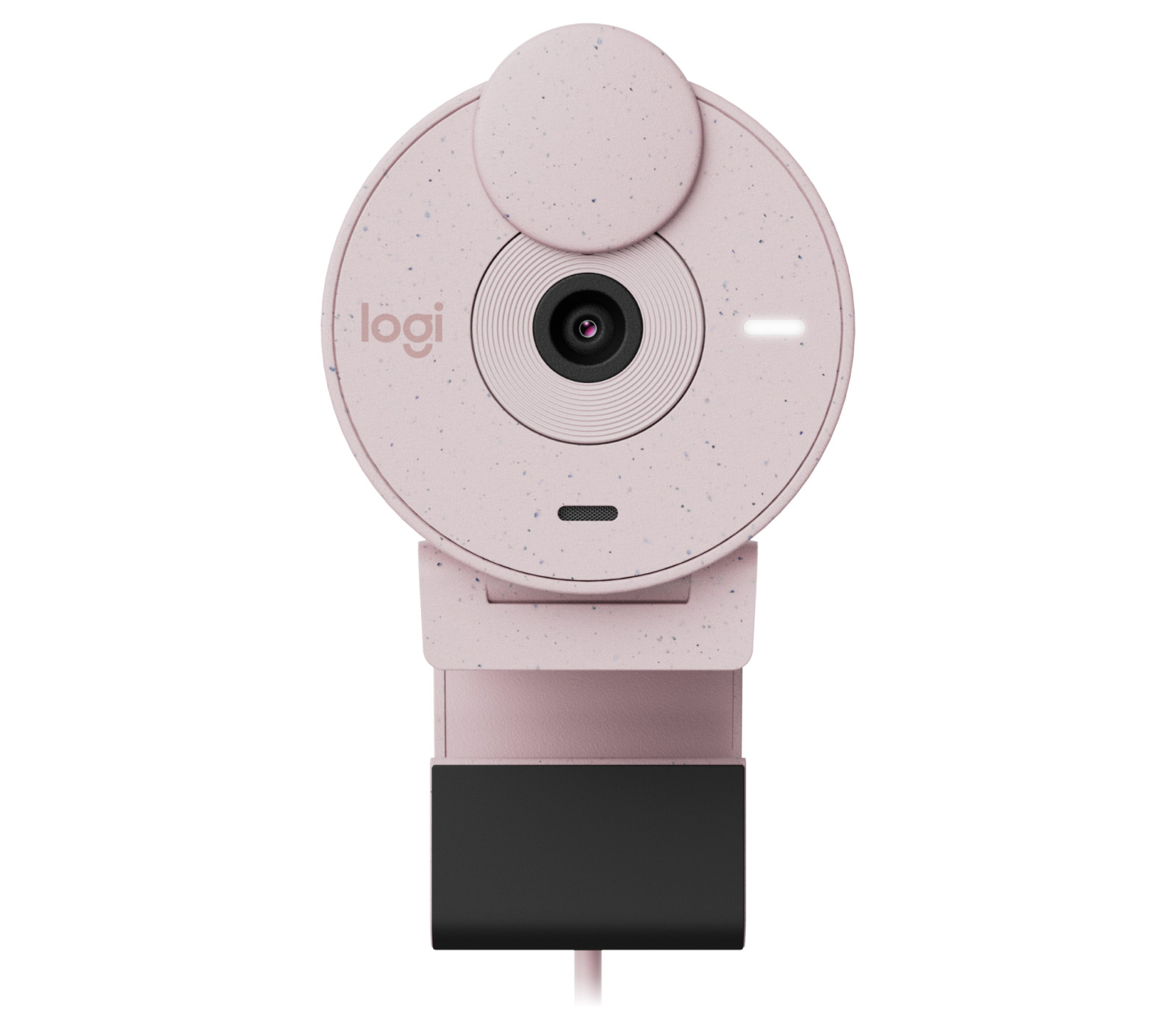



























£53.87*
- Resolution 1920 x 1080 Full HD
- Camera resolution 2 MP
- Field of view 70°


Product information
BRIO 300
Elegant high-resolution webcam with automatic exposure correction to make you look your best at every video meeting.
LET YOUR PERSONALITY SHINE
Look forward to better video meetings with Brio 300, a sleek and compact 1080p webcam with automatic lighting correction so you can always be seen clearly in challenging lighting conditions. Brio 300 is available in 3 colours to suit your personality and features a subtle speckled design - the result of using recycled plastic 62% for graphite, 48% for pink and grey white. Excludes electronic (EE) components, cables and packaging.... Now you can be your best self on every video call.
CHOOSE THE ULTIMATE STYLE.
CHOOSE NEXT LIFE PLASTICS.
Brio 300 not only looks good, but also convinces with sustainable design. The webcam is made of at least 48 % recycled plastic462 % for graphite, 48 % for pink and grey-white. Electronic (EE) components, cables and packaging are excluded. In this way, we want to contribute to a fairer and more climate-positive world. We have chosen the speckled design, which is a result of the different recycled plastics. By doing so, we not only recycle these plastics, but also give the Brio 300 a distinctive, stylish appearance.
SIGN UP AND BE HEARD
Brio 300 is easy to set up and has USB-C connectivity so you can be seen and heard clearly in every video meeting.
See clearly and audibly
Better collaboration thanks to high resolution and basic automatic lighting correction. RightLight 2 automatically compensates for problematic lighting conditions so you can always be seen clearly in video meetings.
AUTHENTIC SOUND
The noise-canceling mono microphone captures and transmits your voice and suppresses background noise so you can be heard clearly.
PRIVATE SHIELD IN HANDWHEEL
Simply turn the built-in shutter to completely darken the camera when not in use. When you're ready for your next meeting, simply open the shutter to reveal the lens.
SPECIALLY DESIGNED FOR MEETINGS
Participate in meetings easily via your favourite video meeting app. Brio 300 is compatible with most meeting and calling platforms and certified for use with Microsoft Teams, Zoom and Google Meet.
A CHOICE YOU'LL BE SATISFIED WITH
Logitech is committed to a more sustainable world. We are actively working to minimise our environmental footprint and accelerate social change.
Specifications:
Multiple resolutions
- 1080p/30fps (1920x1080 pixels)
- 720p/30fps (1280x720 pixels)
Camera megapixels: 2MP
Diagonal field of view (dFOV): 70°
Hardware zoom: 1x digital zoom
Focus: Fixed focus
Lens: Custom Logi 4 element lens with anti-reflective coating
Integrated hood
Plug-and-play connectivity via USB-C
Supported in Logi Tune
Integrated microphone
- Mono microphone
- Microphone range: Up to 1.22 m
Required: Free USB-C port
Compatible with:
Windows, macOS or ChromeOS, and virtually any popular video calling platform 1Logi Tune is not available for Chrome OS.
Certified for
Microsoft Teams, Zoom, Google Meet, Works with Chromebook.
Compatible with
- Windows 10 and above
- macOS 10.15 or higher
- ChromeOS
- (Minimum 2GB RAM required for streaming video in 1080p and 1GB RAM normally required for streaming in 720p)
Technical data
| Name | Logitech Brio 300 Conference Camera, 1920 x 1080 Full HD, 2 MP, 30 fps, 70° |
|---|---|
| Article number | 1000026669 |
| GTIN/EAN | 5099206104952 |
| Manufacturer SKU | 960-001448 |
| Model name | Brio 300 |
| Brand | Logitech |
| Product Type | Conference Camera |
| Resolution | 1920 x 1080 Full HD |
| Frames per Second | 30 fps |
| Focus type | Manual focus |
| Camera resolution | 2 MP |
| Camera sensor | CMOS |
| Field of view | 70° |
| Inputs | 1x USB-C |
| Product width | 5.31 cm |
| Product height | 6.56 cm |
| Product depth | 4.5 cm |
| Weight | 0.76 kg |
| Colour | Pink |
| Delivery contents | USB cable |
| Condition | New |
| Warranty | 24 Month |
| Warranty type | Bringin service Service and support information |
Product safety
| Company |
|---|
| Logitech |
| EPFL - Quartier de l'Innovation, Daniel Borel Innovation Center |
| 1015 Lausanne |
| Switzerland |
| info@logitechg.de |



